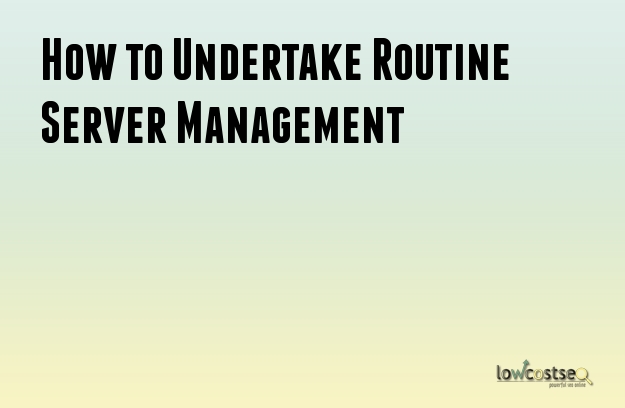
One of the biggest mistakes an organization running on computers can make is ignoring routine server maintenance. Servers, just like any other machines, can easily break down at any time. Whenever this happens, the operations of the organization will come to an immediate stand still. Now if the organization is business oriented, such glitches can lead to a lot of time and financial losses. To avoid this costly situation, it is advisable to conduct routinely server management practices on both the hardware and software components. Below are the key maintenance practices that should be considered.
1. Superficial hardware cleaning
Computer hardware is known to have a high affinity for dust particles. This is due to the electrostatic fields that are constantly generated by the electronic components within the computer itself. Too many dust and dirt particles will ultimately reduce the efficiency of your machine.
It is therefore a good practice to get into the routine of physically cleaning the server. To do this you will need to dismantle the entire machine and clean each of the individual components. Dust can be removed using either a vacuum cleaner or by using a dust blower. Stubborn dirt can be brushed off using a soft brush. Reassembling the server may prove a challenge, for non-computer experts, therefore if your hardware skills are in doubt, do not hesitate to contract an expert for the entire job.
2. Hardware Upgrades
The other important maintenance practice is ensuring that you have the most recent hardware upgrades. Components such as the processors, hard disks, RAM (Random Access Memory), video cards, and NIC cards, among others can be added to your server. These upgrades expand the server's potential, enabling it to process information faster and store more data, which in turn reflects on the organizations overall efficiency.
3. Software Maintenance
A server is said to be only as useful as the software it is run by. This is why software maintenance is arguably the most important of all of these practices. The server houses all sorts of programs that are needed by the organization. In some cases, the same server could be set up as a custom cloud. This means that cloud based applications will also be installed in your local server.
In order to guarantee the security of your server, the operating systems, anti-spy-ware programs, utilities and applications need to be regularly updated. Fortunately, all of these updates can be configured to automatically run in the background, provided that constant Internet connectivity is available.
Back up management also falls within the software maintenance section. Regular backups and restore points should be created on a remote cloud location. The backups are essential in situations where system recovery is the only option left.
It might be tedious and a seemingly waste of resources to undertake routine server management at first, but its fruits go a long way. The initial step is always hard to take, but consistency in managing your server will ensure a robust infrastructure for your business to function smoothly.
